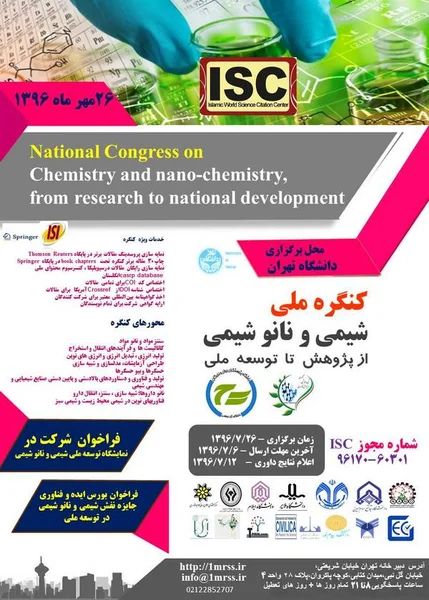-
in vitro biocompatibility of a compliant, blood compatible, and biodegradable nanofibrous scaffold for vascular tissue engineering
جزئیات بیشتر مقاله- تاریخ ارائه: 1396/07/16
- تاریخ انتشار در تی پی بین: 1396/07/16
- تعداد بازدید: 254
- تعداد پرسش و پاسخ ها: 0
- شماره تماس دبیرخانه رویداد: -
a vascular scaffold must not only support appropriate structural integrity until neotissue can form, but also closely mimic the strength and compliance of native blood vessels. emocompatibility is also clearly a crucial factor to raise success of the engineered construct since the vascular scaffold comes in contact with blood. the degradation profile of the scaffold is another important criterion to consider for successful applications in tissue engineering of load-bearing structures like blood vessel tissues. a tissue-engineered vascular graft requires complete scaffold degradation with well-defined cellular organization and tissue remodeling. to cover all these required features, we carried out the blend electrospinning to fabricate nanofibers of poly(l-lactide acid-co-poly ε-caprolactone) (plcl), a biodegradable and compliant polymer, gelatin (gel), a biodegradable and commercially available natural biopolymer possessing many integrin binding sites (such as rgd) for cell adhesion, and tecophilic (tp), a hydrophilic, elastic and hemocompatible polyether-based thermoplastic aliphatic polyurethane, with a weight ratio of 60:20:20 (pgt;60/20/20) resulted in creation of a compliant, hemocompatible and biodegradable scaffold. the nanofibrous structure of the scaffold was visualized using a scanning electron microscope (sem). the surface characterization of scaffold was carried out using atr-ftir spectroscopic analysis. for evaluating the potential of electrospun pgt;60/20/20 scaffold as a substrate for vascular regeneration, we cultured human aortic smooth muscle cells (smcs) on the scaffold and studied the biocompatibility of the structure by performing the proliferation assay and cell morphology assessment. sem images demonstrated that electrospun pgt;60/20/20 nanofibers were successfully produced with a fiber diameter of 459±198 nm which revealed a significant reduction compared to fiber diameter of electrospun pure plcl and pure tp. atr-ftir analysis confirms the presence of all components within the fibers. comparing the behavior of smcs on pgt;60/20/20 scaffolds with that on electrospun plcl and tp scaffolds confirmed the potential use of pgt;60/20/20 nanofibers in blood vessel tissue engineering.
حوزه های تحت پوشش رویداد
مقالات جدیدترین رویدادها
-
استفاده از تحلیل اهمیت-عملکرد در ارائه الگوی مدیریت خلاقیت سازمانی و ارائه راهکار جهت بهبود
-
بررسی تاثیر ارزش وجوه نقد مازاد بر ساختار سرمایه شرکت های پذیرفته شده در بورس اوراق بهادار تهران
-
بررسی تأثیر سطح افشای ریسک بر قرارداد بدهی شرکت های پذیرفته شده در بورس اوراق بهادار تهران
-
بررسی تأثیر رتبه بندی اعتباری مبتنی بر مدل امتیاز بازار نوظهور بر نقد شوندگی سهام با تأکید بر خصوصی سازی شرکت ها
-
تأثیر آمیخته بازاریابی پوشاک ایرانی بر تصویر ذهنی مشتری پوشاک ایرانی (هاکوپیان)
-
زیبایی شناسی و تاثیر آن بر فناوری نوین ساخت در معماری پایدار
-
اثر غلظت جیره و افزودن آنتی اکسیدان ها بر هورمون های تیروئیدی جوجه های گوشتی تحت تنش سرمایی
-
بررسی اثرات انسولین و اسیداسکوربیک بر بیان ژن های خانواده ی bcl-2 در ناحیه ی هیپوکامپ موش های صحرایی دیابتی شده توسط استرپتوزوسین
-
an analysis on the situation of poverty in mahabad city by emphasis on the economic dimension
-
optimal dg placement based on dg cost, voltage stability, loses active and ractive and variations load
مقالات جدیدترین ژورنال ها
-
مدیریت و بررسی افسردگی دانش آموزان دختر مقطع متوسطه دوم در دروان کرونا در شهرستان دزفول
-
مدیریت و بررسی خرد سیاسی در اندیشه ی فردوسی در ادب ایران
-
واکاوی و مدیریت توصیفی قلمدان(جاکلیدی)ضریح در موزه آستان قدس رضوی
-
بررسی تاثیر خلاقیت، دانش و انگیزه کارکنان بر پیشنهادات نوآورانه کارکنان ( مورد مطالعه: هتل های 3 و 4 ستاره استان کرمان)
-
بررسی تاثیر کیفیت سیستم های اطلاعاتی بر تصمیم گیری موفق در شرکتهای تولیدی استان اصفهان (مورد مطالعه: مدیران شرکتهای تولیدی استان اصفهان)
-
اثر سقف شیشه ای بر ارتقای جایگاه مدیریتی زنان
-
تاثیر محافظه کاری حسابرس و رتبه بندی موسسات حسابرسی بر مدیریت سود مبتنی بر اقلام تعهدی
-
بهینه سازی فرایند تولید گوگرد از گازهای اسیدی با روش کلاوس در پالایشگاه گازی با استفاده از نرم افزار aspen hysys
-
رابطه شکست خدمات و احیاء خدمات با وفاداری مشتریان
-
بررسی حقوقی و اقتصادی تاثیر تحریم ها بر صنعت گردشگری




سوال خود را در مورد این مقاله مطرح نمایید :